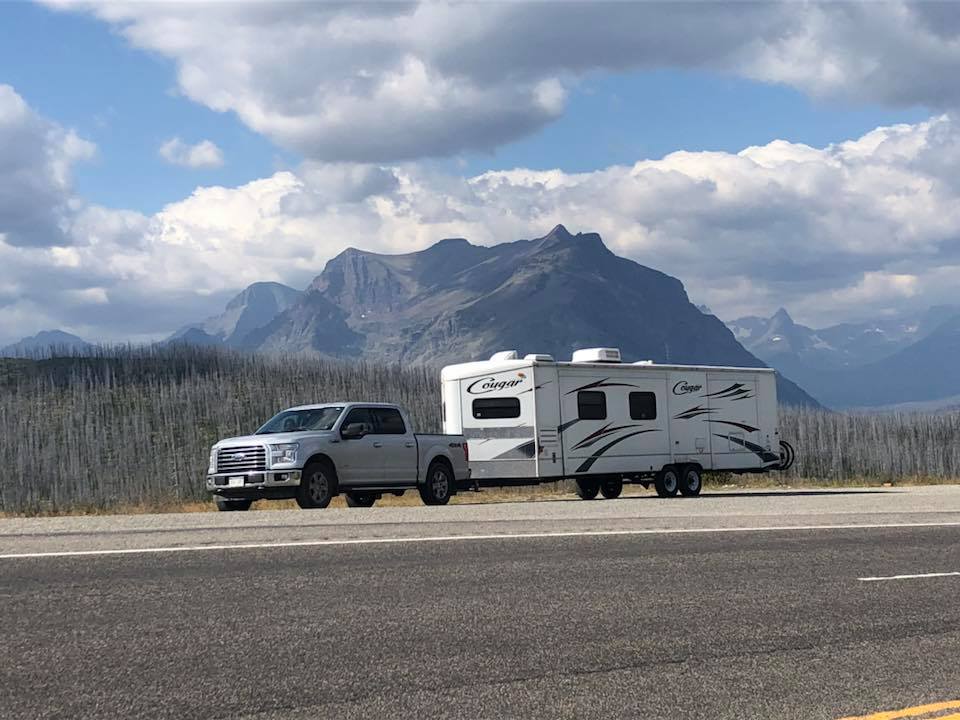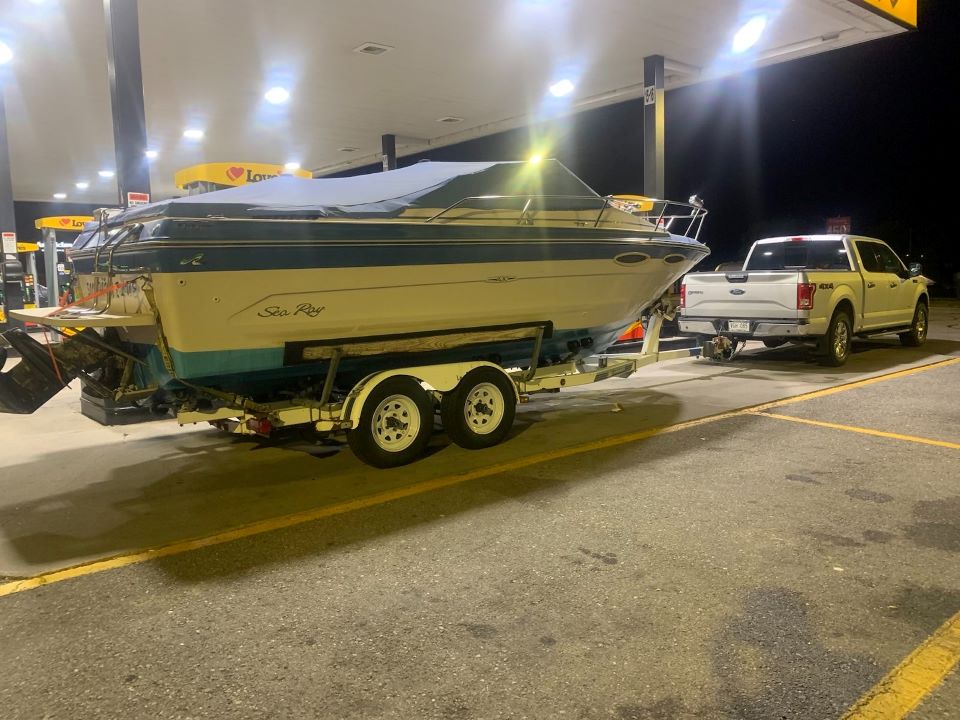schmookeeg
En-Route
My plane gets 8mpg and is an eco-disaster by any measure. That "Eco-boost" branding should be tossed out.
All the crap that has to get recalibrated when the windshield is replaced is spendy. That housing for rearview mirror holds more than a few sensors amd such.…The only downside is apparently, my windshield is a rock magnetI've spent $2k on windshields (higher deductible, don't go there).
I have an EcoBoost Flex. You can have Eco, or you can have Boost, but you cannot have both at the same time. It's fun to accelerate hard. It's also spendy.My plane gets 8mpg and is an eco-disaster by any measure. That "Eco-boost" branding should be tossed out.
You can have Eco, or you can have Boost, but you cannot have both at the same time.

Anyone purchase and have shipped? How does someone protect themselves?
Just figured I'd add a little of my experience to the thread. I have a 2016 F150 XLT 3.5l EcoBoost with the 3.31 rear end and tow a 20' fiberglass walleye boat that is probably around 4500-5000#. It tows absolutely wonderfully, no problem with big hills or getting up to speed, I get about 12mpg towing it and around 18-19 unloaded on the freeway at 75. I have 130k miles on it now and have had exactly 0 issues with it other than a recall or 2 that were completed in 1 day without having to leave it at the dealership. I've also pulled my MIL's 28' camper around with it and get around 9-10mpg but it tows it without any issue at all. I even found myself at 80mph going up a huge hill not paying attention. The EcoBoost just pulls and does so at a nice low RPM.
What’s the payload on your truck? Sure it might pull that kind of stuff fine, but are you legal doing it
My payload is 1776 lbs ('17 F150, 3.5L, Max tow package). A 4500-5000 lb boat w/ trailer would have a tongue weight of maybe 500 lbs (probably less, boat trailers are notoriously poorly balanced and light on the tongue), leaving plenty of remaining payload.What’s the payload on your truck? Sure it might pull that kind of stuff fine, but are you legal doing it


At sea-level, it is pretty close. Once you start increasing in density altitude, it is no contest. Tow a camper out west and the 3.5L will still be making full-power when the 5.0L coyote will easily be reduced by 100+ hp or more from the lack of turbos and the thinner air. Coyote will be going slow screaming in RPM while the Ecoboost blasts right by like it's still at sea-level.
My payload is 1776 lbs ('17 F150, 3.5L, Max tow package). A 4500-5000 lb boat w/ trailer would have a tongue weight of maybe 500 lbs (probably less, boat trailers are notoriously poorly balanced and light on the tongue), leaving plenty of remaining payload.
Photos of the camper/boat mine has legally towed all over the country, generally at 75 mph (weight distributing hitch used w/ the camper):


Don't have the numbers with me at the moment, but I've looked at it before and I was legal even with all the stuff I had in the truck.
The average elevation of the state of Colorado is 6,800 ft. Your math above is forgetting about temperature, and just assuming standard temperature, but that isn't how summer typically works. On an 85 degree day (pretty reasonable), you'd tack on about another 2050 ft to that. So now your Colorado average is up to 8,050 ft density altitude. Using your 3% per 1000 ft, the Coyote would be down to 76% power available, best case, using an average altitude on a typical summer day in Colorado.If the 3.5L EB makes 375HP and we use the widely accepted average of 3% loss of HP per 1000' with naturally aspirated engines, you'd have to be operating at close to 10,000' to experience a 100HP loss. Unless you're towing up Pikes Peak, you'll probably be OK the vast majority of the time with a 5.0L. Having said that, I'm saving my pennies for the 3.5L Powerboost as I'd LOVE to have the onboard generator to run our travel trailer, instead of carrying a stand alone generator.
What's it say when you have your glass man on your favs list in cell phone?All the crap that has to get recalibrated when the windshield is replaced is spendy. That housing for rearview mirror holds more than a few sensors amd such.
I’m not looking forward to it if I ever have to get mine replaced.
What's it say when you have your glass man on your favs list in cell phone?

What’s the payload on your truck? Sure it might pull that kind of stuff fine, but are you legal doing it
Looked it up this weekend. I have 2050lbs payload on my XLT supercrew with 3.31 and 3.5 ecoboost 4x4. The 7000# GVWR is an upgrade though with the 3.31 electonic lock rr axle
That’s not bad then. Probably best case scenario for a 3.31 F150. Ford loves to advertise what their trucks are theoretically capable of pulling (and don’t get me started on that, it’s dumb to be pulling 10K+ on a half ton truck), but they never mention you have to have the payload numbers for the tongue weight.
Looked it up this weekend. I have 2050lbs payload on my XLT supercrew with 3.31 and 3.5 ecoboost 4x4. The 7000# GVWR is an upgrade though with the 3.31 electonic lock rr axle
2WD and lightly optioned?
Mine has 1508 payload that ends up being the limiting factor once you add 36gals of gas and a couple of people. I end up with ~900lbs useable.
Optioned pretty well and 4x4. It's actually one of the higher optioned XLTs you could get when I bought it. I've only got the 23 gallon fuel tank though. It's in the options that I gained too. The towing package, rear end locker and GVWR increase is where I got my good payload. There is also a Max Tow option and the even better Max Payload option, the unicorn is having both of those in combination.
Interesting. My KR FX4 has the 3.73 e-locker, trailer tow, and 7000lb GVWR. There’s not 500lbs in 13 gallons of gas so I wonder if the interior trim, all the sensors and tech, and 20” wheels make the difference. I know the 5.0 and the 3.5EB are close to each other in weight.
Mine’s a 2017, what year is your?
Interesting. My KR FX4 has the 3.73 e-locker, trailer tow, and 7000lb GVWR. There’s not 500lbs in 13 gallons of gas so I wonder if the interior trim, all the sensors and tech, and 20” wheels make the difference. I know the 5.0 and the 3.5EB are close to each other in weight.
Mine’s a 2017, what year is your?
The 2017 3.5L Ecoboost was the first F150 to get the 10R80 (mine has it). In later years, they brought it to the 2.7L Ecoboost & the Coyote.Probably just the wheel size and transmission. The 2018+ has the 10speed transmission (co-developed with GM) which likely gets a bump in the "payload/tow rating"
The 2017 3.5L Ecoboost was the first F150 to get the 10R80 (mine has it). In later years, they brought it to the 2.7L Ecoboost & the Coyote.
2017 was a pretty big redesign year for the F150. It was the first year of the gen 2 3.5 Ecoboost, and the gen 2 came with the 10R80. The 10R80 has been great. The ecoboost has done everything I've asked it to do, and a lot more.Interesting, I swore the Expedition/F-150 got it in 2018 with the redesign.
2017 was a pretty big redesign year for the F150. It was the first year of the gen 2 3.5 Ecoboost, and the gen 2 came with the 10R80. The 10R80 has been great. The ecoboost has done everything I've asked it to do, and a lot more.
That said, it is going into the Ford dealer next week for new cam phasers/timing chain/guides/VCTs/water pump/etc. It seems Ford still can't figure out how to make a damn cam phaser last. Luckily it isn't costing me anything, it started acting up just in the nick of time. I am getting it fixed on the 20th, and my ESP plan expires on the 22nd. Truck has 90,000 miles with a third of that towing right up near 10,000 lbs, usually in the mountains out west.
I guess the 2.7L Ecoboost hasn't had the cam phaser issues. Ford updated the phaser parts in the later year G2 3.5 engines. We'll see how long mine lasts with the upgraded parts. I'm expecting to run this truck at least another 5 years. Maybe another 10.
My previous F150 was a 2001 with the 5.4L. I sold it somewhere around 200k miles. At some point or another, I replaced everything that was driven by a belt or related to a belt. Other than that (typical), I did have it blow a spark plug out of a cylinder once in a drive-through parking lot. Destroyed the COP that was attached to it. Had to heli-coil new threads in.I never heard a peep from the cam phasers/timing chain guides in my '08 F-150 which I sold with over 160K miles on the 5.4L. Only "repair" I ever really had done on it was broken passenger exhaust studs where were an annoyance rather than any problem with function. They still had the 4-speed auto transmission at that point, but it worked well and never skipped a beat.
I never heard a peep from the cam phasers/timing chain guides in my '08 F-150 which I sold with over 160K miles on the 5.4L. Only "repair" I ever really had done on it was broken passenger exhaust studs where were an annoyance rather than any problem with function. They still had the 4-speed auto transmission at that point, but it worked well and never skipped a beat.
For those that are even thinking of reducing tongue weight to stay "Legal" on their GVR, don't do it. A gusty cross wind or passing truck can give you a ride like Richard Petty gave you a bumper tap to pass.
That will get you to the scene of the accident, which is what you want to avoid.
Over GVR, and have an accident? It will most likely be less severe than the hitch weight one, and if it is severe, they will have an impossible task proving that you were over weight. I have seen a trailer go into oscillations at 60+ MPH in front of me, jack knife, and leave the highway. The leverage and velocity broke the hitch, and safety chains, the truck went off the right side, and the trailer went off the left side. Speed limit was 55, I was driving 55, he was in a hurry. I went through just after they parted company, and did not stop, as the traffic was heavy. People behind me had a better chance of stopping without getting hit.
I have driven with a boat trailer when the tongue weight was low enough that the seller lifted the hitch onto my ball, without grunting. I drove all the way home at less than 30 MPH, as that is where sway started if a car passed me. All the way home on back roads. I had a welder move the bow winch tower 2 feet forward to get good weight.
